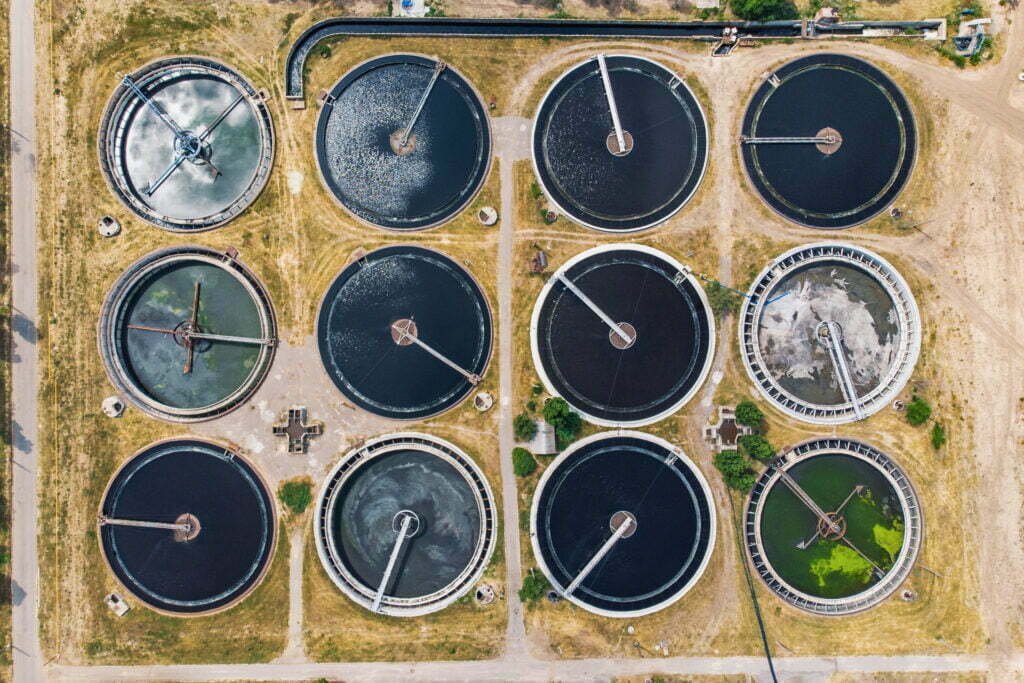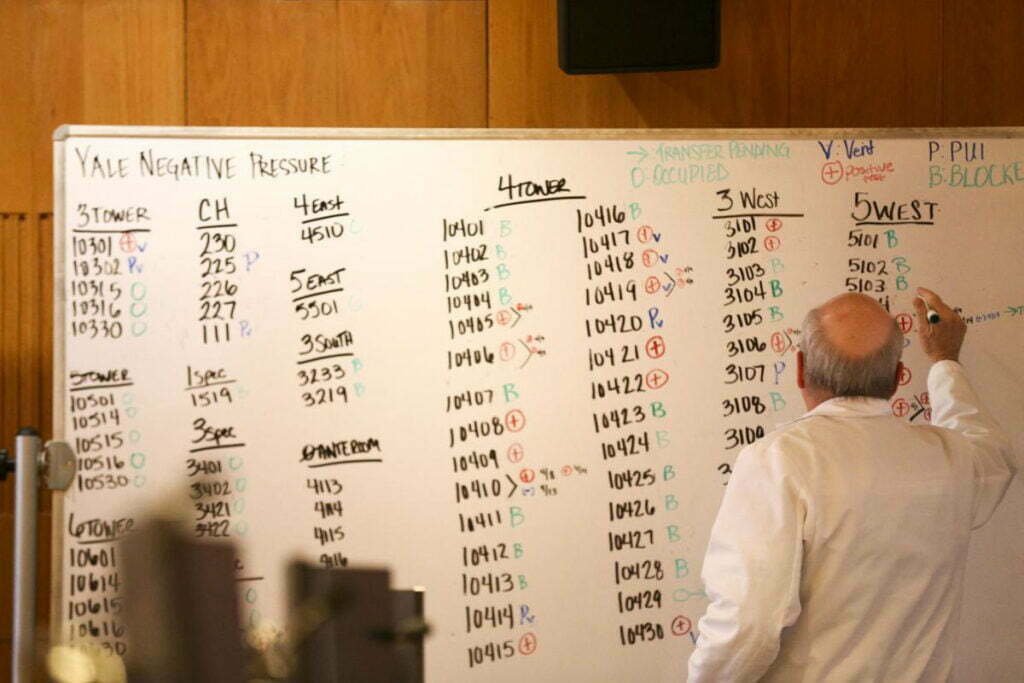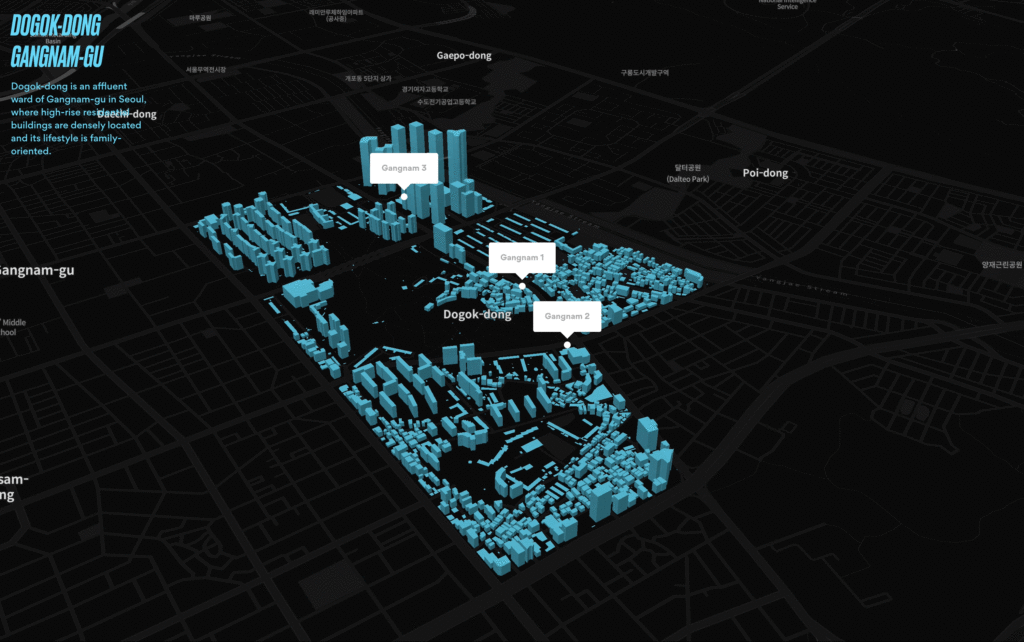Two weeks ago, on September 24, the Department of Health and Human Services (HHS) published a solicitation for the creation of a new “early warning system” that would “detect and track traces of the [corona]virus in community wastewater, compile the data, [and] conduct predictive analysis” in order to “guide reopening and mitigation strategies, and also serve as leading indicator for local re-emergence events to enable rapid containment.” HHS was seeking a contractor to design the new Covid-19 detection system, hoping, it said, to have this new system operational in at least forty-two US states by the end of year.
The first phase of the proposed project would involve testing and reporting from approximately one hundred wastewater treatment plants across the United States, covering an estimated 10 percent of the population. HHS, per the solicitation, reserves the option to expand the program to include up to 320 wastewater treatment plants, covering around 30 percent of the population. The solicitation claimed that wastewater testing would allow HHS officials to predict new Covid-19 cases five to eleven days before an outbreak.
The initiative appears to be an expansion of a “new public health tool” announced last month by HHS and the Centers for Disease Control and Prevention (CDC) called the National Wastewater Surveillance System. This tool was originally intended to “help public health officials to better understand the extent of COVID-19 infections in communities.” Per the recent HHS solicitation, however, the wastewater surveillance system will now be used to predict outbreaks before they occur and to guide “rapid containment” efforts in “at-risk” communities.
At the core of this new early warning system based on wastewater surveillance is a secretive data platform that HHS launched earlier this year called HHS Protect. HHS describes Protect as “a secure platform for authentication, amalgamation, and sharing of healthcare information” that combines “more than 200 disparate data sources” from federal, state, and local governments as well as the private health-care industry.
HHS Protect is largely built from software obtained from the controversial data-mining company Palantir, whose creation was funded by Silicon Valley billionaire Peter Thiel and the CIA’s In-Q-Tel. In addition, Palantir’s only client during its early years, from 2005 to 2008, was the CIA, and the agency offered “guidance” for the development of Palantir’s products, including those that the HHS Protect system is based on. Palantir is currently a major contractor to all seventeen US intelligence agencies, including the CIA, as well as the Department of Homeland Security, the US military, and numerous other federal agencies.

Palantir remains actively involved in HHS Protect, having done much more than merely supply the foundational software. For instance, in May, HHS said that the department’s partnership with Palantir through HHS Protect “is ongoing” and the project’s goals include “trying to anticipate where the virus is heading.” One report regarding the HHS-Palantir partnership published in May also noted that it was unclear which specific Palantir products HHS was using. The report also noted that, while the government was not currently collecting personal information through HHS Protect, “it plans to.”
In July, Science Magazine reported that, on behalf of HHS Protect, “Palantir is aggregating information on the spread of the new coronavirus on behalf of the U.S. Department of Health and Human Services (HHS), drawing on more than 225 data sets, including demographic statistics, community-based tests, and a wide range of state-provided data.” It is unclear exactly what data is being fed into this system and if all are relevant to the officially stated purpose of HHS Protect as it relates to the government’s Covid-19 response.
In July HHS Protect was also heavily criticized by several public health experts and epidemiologists, among others, because of the sudden decision by HHS to force US hospitals to provide all data on Covid-19 cases and patient information directly into HHS Protect via another contractor called TeleTracking. Such information was previously reported to a CDC-managed system called the National Healthcare Safety Network. A few weeks later, in late August, the Trump administration said it would revoke Medicare and Medicaid funding to any US hospital that chose not to comply with feeding all of their Covid-19 patient data and test results into the HHS Protect “ecosystem.”
A New Vision
Since it was launched in April, HHS Protect has been both controversial and a critical part of behind-the-scenes decision making by top officials at the federal and state levels with respect to Covid-19 policy. For instance, the Center for Public Integrity recently reported that much of the basic Covid-19–related data contained within the HHS Protect system “remains secret and is sometimes obscured even from local public health officials.” That report also noted that “the White House task force’s secret recommendations to governors use HHS Protect data on cities’ test positivity rates, but the White House does not release those reports,” adding that this “national dataset is still nowhere to be found on any federal website.”
HHS Protect has, however, done much more than just inform these “secret recommendations” from the White House coronavirus task force. For instance, the Palantir-powered HHS Protect system also identifies coronavirus patients to be used in clinical vaccine trials, determines how the federal government distributes the antiviral drug remdesivir, and informs the “outbreak warnings” that taskforce member and White House adviser Dr. Deborah Birx privately communicates to cities across the country.
The Center for Public Integrity further noted that HHS Protect allows officials “to analyze, visualize and map information so they can, for example, see how weakening local health ordinances could affect restaurant spending and coronavirus deaths in mid-size cities across America.” In other words, it is essentially a tool that allows officials to micromanage every aspect of Covid-19 response as well as predict the economic impacts of lockdowns and other policies related to Covid-19.

The “predictive” aspect of HHS Protect is not only set to get a major boost from the new wastewater “early warning system” but also from a new component of the platform that is powered by artificial intelligence (AI) called HHS Vision. HHS Vision’s purpose is to help officials predict the impacts of a proposed government intervention policy.
According to José Arrieta, the former HHS chief information officer who abruptly resigned in August, HHS Vision “uses pre-written algorithms to simulate behaviors and forecast possible outcomes” through “supervised machine learning.” Arrieta also stated that HHS Vision does not include any software components purchased from Palantir. During his tenure at HHS, Arrieta was a staunch advocate of HHS using AI, blockchain, and other “emerging technologies” and wanted to use the agency as a “testing bed” for these technologies, particularly in collaboration with the Pentagon.
Aside from Arrieta’s comments, there is little public information about HHS Vision and its capabilities. What is known is that the effort to create HHS Vision began in July, when HHS awarded the contract for its creation to Vertosoft, a relatively small contracting firm that focuses on the sale of “emerging technologies” to the public sector. Vertosoft, and its executive team, have rather cozy ties to tech giant IBM as Vertosoft markets IBM software to the US government, and Vertosoft’s current president and vice president for federal sales are both former top IBM executives in its public-sector division, IBM Federal. IBM’s role here is notable as, just last year, the CIA hired IBM Federal vice president Juliane Gallina to serve as the intelligence agency’s chief information officer. In that position, Gallina oversees “the CIA’s modernization efforts as well as making better use of the massive amount of data it possesses.”
Biobot and “Smart Sewers”
In reporting on the HHS plans to add a national wastewater surveillance component to HHS Protect and its Covid-19 response efforts, CNBC commented that the solicitation “appears designed for one company in particular, Biobot Analytics.” Biobot Analytics was created initially at MIT and describes itself as “the first company in the world to commercialize data from sewage.” CNBC noted that Biobot recently claimed to have already partnered with wastewater treatment plants in forty-two states that would monitor 10 percent of the US population, which is analogous to the Phase 1 goals of the new HHS program described in the solicitation. CNBC also pointed out that the solicitation not only states that the contract is to be awarded to a women-owned small business, as is Biobot, but also that the bid period was set to end the day after it was posted, an unusually short bid time.
Though they now promote their wastewater surveillance and analysis as “a promising approach for proactive outbreak monitoring,” Biobot originally focused on analyzing sewage to determine the prevalence of drug use, particularly opioids, in different areas of the country. The company previously collaborated with HHS for this purpose. Biobot’s history clearly reveals that they plan to “commercialize data from sewage” in ways that go far beyond monitoring Covid-19.
In a scientific paper published in January 2020, before the company’s pivot to testing for Covid-19 in wastewater, Biobot’s team asserted that their service could provide “a potential method to quantify community-level trends of opioid exposure beyond overdose data” that “could be used to detect patterns of opioid exposure and may ultimately provide information for opioid use disorder (OUD) treatment and harm reduction programs.” As revealed in this paper, Biobot utilizes “smart sewer selection and robotic wastewater collection.”
An MIT project called Underworlds, the direct precursor to Biobot, notes that the data that Biobot now seeks to commercialize would offer not only insights on drug consumption or contagious disease outbreaks but also information on community “eating habits” and “genetic tendencies” in order to “develop individual readings of particular neighborhoods.

MIT’s Underworlds and its commercial spin-off Biobot were praised in a 2019 book called Smart Cities in the Post-algorithmic Era as advancing “one key dimensions of the smart city movement” by combining “genomics, robotics and urban planning to tackle public health problems.” If a city uses Biobot’s technology, the authors argued, it will be “able to measure the effects of policy changes and other public health interventions, such as a sugar tax and bans on certain substances” if too much of the “wrong” substance or evidence of “unhealthy” eating habits are identified by Biobot-enabled “smart sewers.”
Such smart sewers have already been implemented across the United States— in Cincinnati, Ohio, South Bend, Indiana, and Kansas City, Missouri, among other cities. Now, under the guise of combatting Covid-19, Biobot is poised to construct a national smart sewer system managed by HHS and its Palantir-powered HHS Protect system. As Biobot’s previous collaboration with HHS to monitor illicit drug use indicates, it is highly unlikely that this coming nationwide sewer surveillance system will remain exclusively focused on identifying and predicting Covid-19 outbreaks. The wealth of data would also allow HHS and other parts of the federal government to surveil whatever Americans choose to ingest or pour down the drain.
The Bio-Surveillance State
In the wake of the September 11 attacks, the Pentagon’s Defense Advanced Research Projects Agency (DARPA), in close collaboration with the US intelligence community, began developing a “pre-crime” approach to combatting terrorism known as “total information awareness” or TIA. Before the plan was disbanded just months after its launch due to widespread concerns that it would erode the right to privacy and civil liberties in general, TIA included a program called “Bio-Surveillance.”
The TIA Bio-Surveillance program was aimed at developing “necessary information technologies and resulting prototype capable of detecting the covert release of a biological pathogen automatically, and significantly earlier than traditional approaches,” accomplishing this “by monitoring non-traditional data sources” including “pre-diagnostic medical data” and “behavioral indicators.” While nominally focused on “bioterroist attacks,” TIA Bio-Surveillance also sought to acquire early detection capabilities for “normal” disease outbreaks that could eventually be automated.
As the nonprofit AFCEA wrote of the program in 2003, the Bio-Surveillance “effort largely is focused on mining and studying unconventional data sources such as over-the-counter sales of medicines and foods associated with illnesses and levels of school absenteeism. Researchers are examining a range of different data sources coupled with more conventional information used in epidemiology to provide early warning and detection of bioterrorism events” as well as natural disease outbreaks.
Given what this article has shown, HHS Protect and its more recent foray into wastewater surveillance appears to be a convenient retooling of a post-9/11 program (TIA) that was so egregiously invasive that the Senate shut it down after significant public outcry. This seems especially likely given the outsized role of Palantir, a government contractor deeply linked to the CIA, and the fact that HHS Protect, which Palantir is helping to manage, has been kept far away from public scrutiny.
While the fear of terrorism in the years that followed 9/11 was insufficient to ensure the official continuation of TIA and its programs, including Bio-Surveillance, many of its components were covertly handed off to various US intelligence agencies and contractors. Conveniently for those in government who enthusiastically backed TIA and its secretive successors, the current coronavirus crisis has brought public fear to heights near to what it was in late 2001.
Yet, in contrast to the aftermath of 9/11, the invisible enemy is no longer a faceless terrorist hiding in caves abroad but a microbe that may dwell anywhere in our environment or within our bodies. While post-9/11 surveillance was officially aimed at intercepting terrorist communications before an attack could transpire, the surveillance push we are seeing today—under the guise of fighting Covid-19—increasingly seeks to monitor what is going into, out of, and happening within our very bodies.








